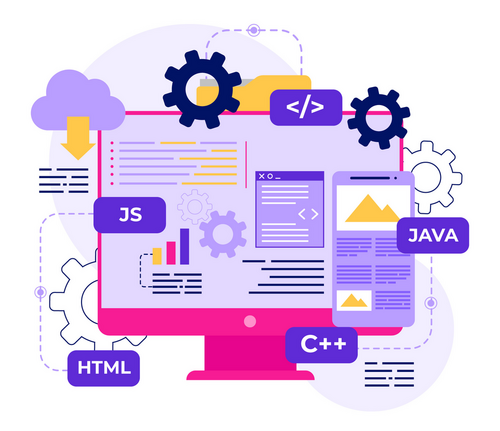
Software Development
Software development involves creating tailored software solutions to meet specific requirements of a business or individual. Unlike off-the-shelf software, custom software is designed and built from scratch to address unique needs and challenges.
Our team is experienced with system integrations, microservices, API integrations & data migration & upgrades. Whether you need to build, customize, synchronize, or integrate APIs, we can address your specific business requirements.
Software development encompasses the entire process of creating software, from conception to deployment and maintenance.
Here's a breakdown of the key stages involved:
Planning and Analysis
This initial phase involves gathering requirements, understanding the problem domain, and defining the scope of the project. It includes discussions with stakeholders, identifying goals, and creating a roadmap for development.
Design
In this phase, the software architecture is designed based on the requirements gathered in the planning stage. This includes creating high-level design documents, defining system components, and establishing interfaces between them.
Implementation
The actual coding of the software takes place during this stage. Developers write code according to the design specifications, following best practices and coding standards. This phase involves regular code reviews, version control, and collaboration among team members.
Testing
Quality assurance (QA) engineers conduct various tests to ensure that the software meets functional, performance, and security requirements. This includes unit testing, integration testing, system testing, and user acceptance testing (UAT). Bugs and issues are identified and fixed during this phase.
Deployment
Once the software has passed testing and is deemed stable, it is deployed to the production environment. This may involve installation, configuration, data migration, and setting up infrastructure components such as servers and databases.
Maintenance and Support
After deployment, the software requires ongoing maintenance and support to address any issues, implement updates, and ensure optimal performance. This phase involves monitoring, troubleshooting, and providing technical assistance to end users.
Throughout the software development lifecycle, collaboration, communication, and iteration are key principles. Agile methodologies, such as Scrum or Kanban, are often used to manage projects, promote flexibility, and respond to changing requirements.
Software development can be categorized into various types, including:
Web Development
Creating web-based applications, websites, and web services using technologies such as HTML, CSS, JavaScript, and server-side languages like PHP, Python, or Node.js.
Mobile Development
Building applications for mobile devices such as smartphones and tablets, targeting platforms like iOS (using Swift or Objective-C) or Android (using Java or Kotlin).
Desktop Development
Developing software applications that run on desktop operating systems like Windows, macOS, or Linux, using frameworks and languages like .NET, Java, or Electron.
Embedded Development
Designing software for embedded systems, such as microcontrollers or IoT devices, often using low-level languages like C or C++.
Each type of development has its own set of challenges, requirements, and best practices, but they all share the fundamental principles of software engineering and development methodologies.





